This Week At Angama #87
4 October 2019 | This Week at Angama | Adam Bannister
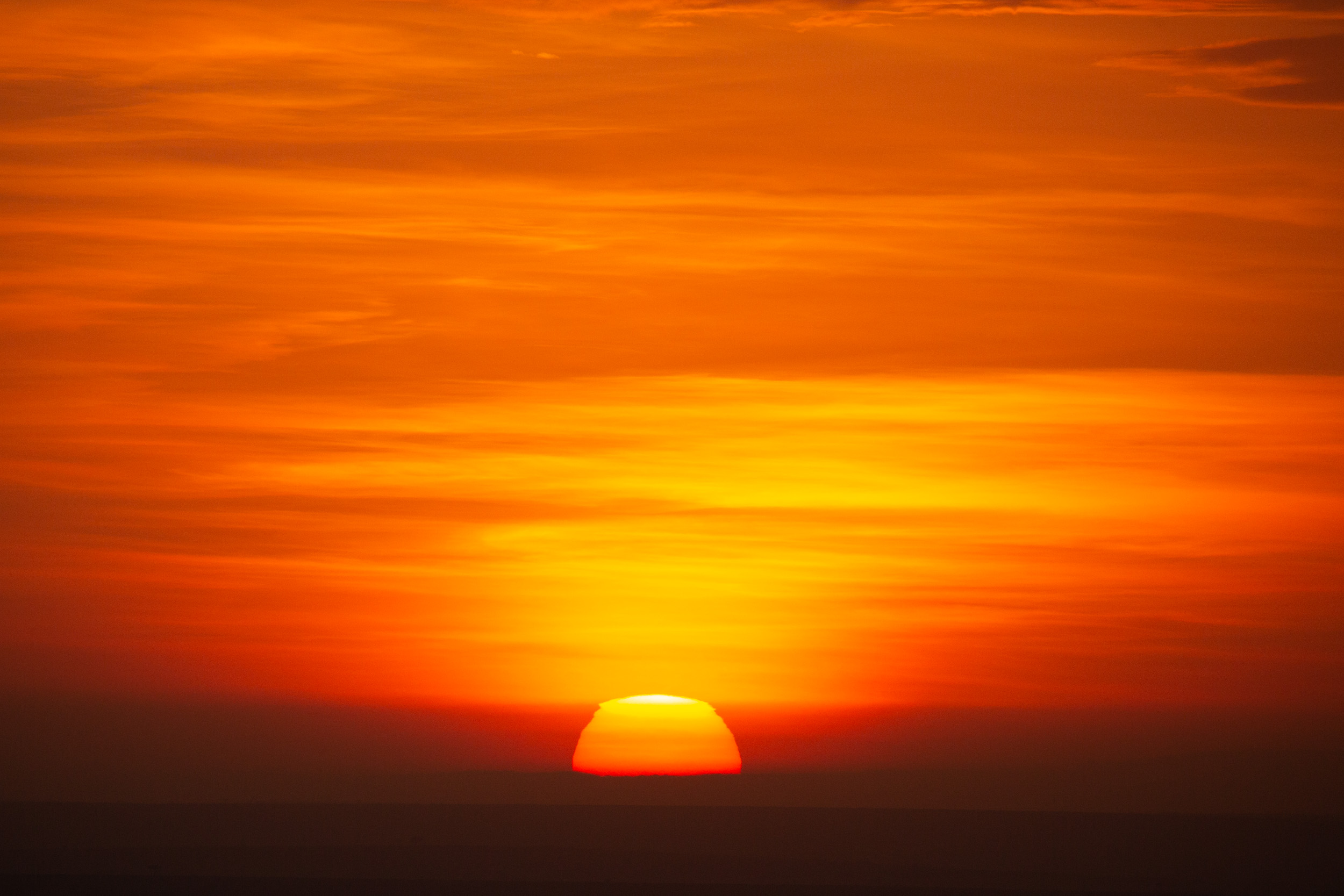
For now, each safari is punctuated with a good sprinkling of mud. The ground is wet and every depression is full of water. The rains have come and this has caused a ripple effect across the grasslands. A week ago, it looked as if the migration was in its final stages as all the herds were moving south into the Serengeti. However, things can change quickly here, and I am happy to say that hundreds of thousands of wildebeest are now back in the heart of the Mara Triangle, and it is almost as if we are in for a ‘bonus’ migration season. [f 5.6, 1/2500, ISO 800, -0.33]
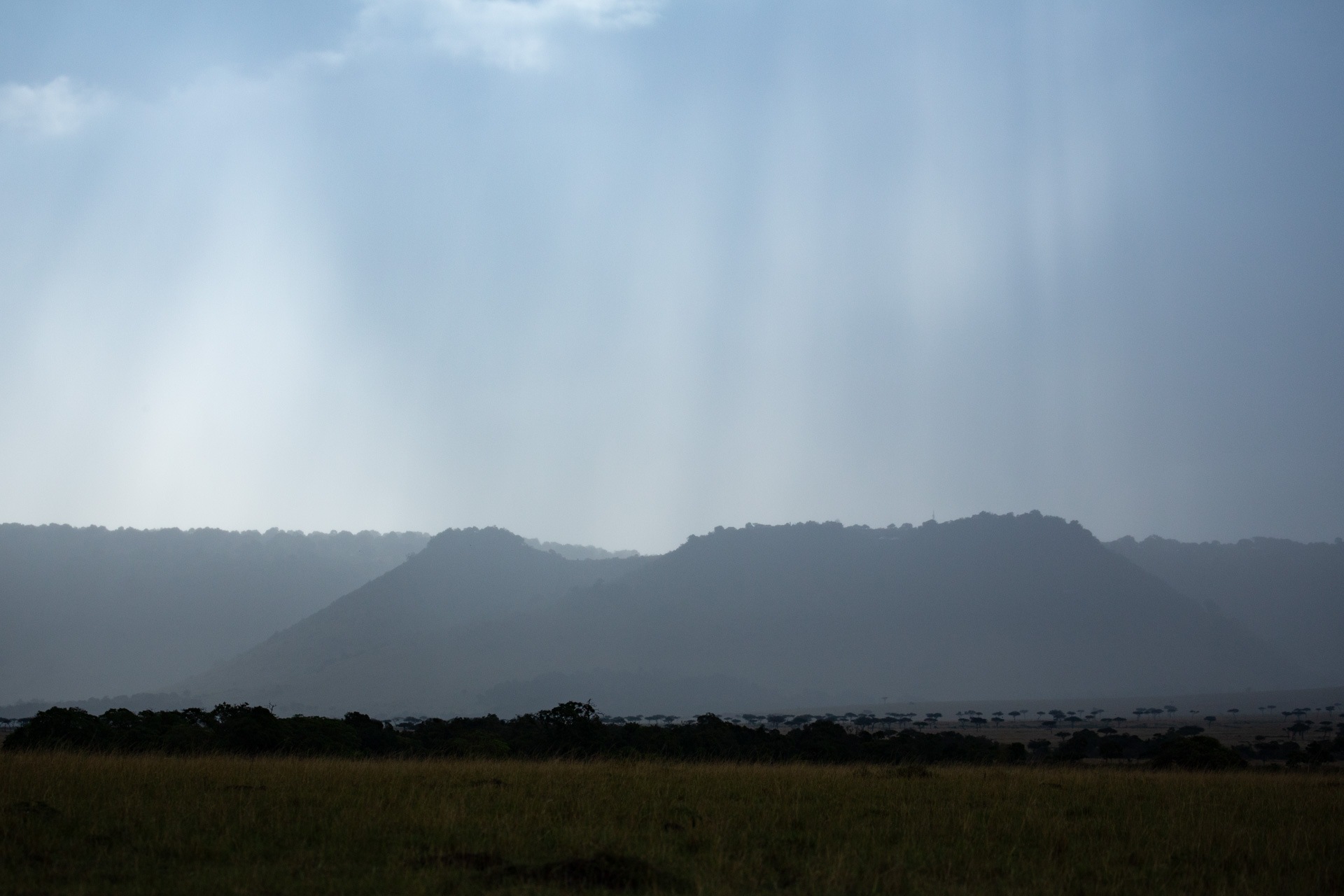
We were delighted to welcome the much-needed rains in the Mara this week. It rained fairly heavily in certain parts of the reserve in the late afternoons and overnight. This made for some dramatic skies and muddy drives. Mara mud: as far as I’m concerned, it’s the best type of mud. [f 5.0, 1/2000, ISO 800]
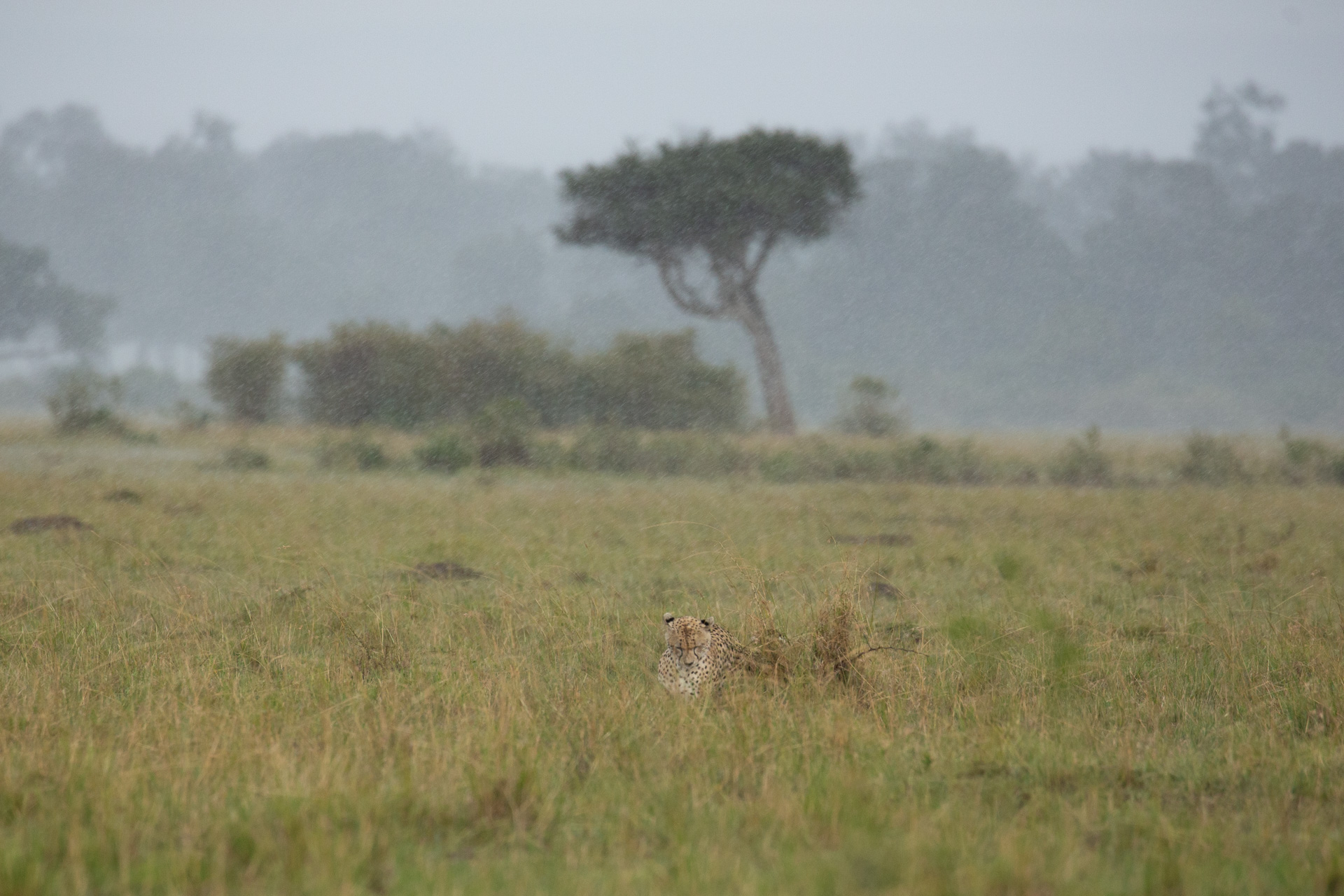
A female cheetah tries to take shelter from the driving rain. She was found the following day feasting on a wildebeest calf. The overnight rain had an almost instantaneous effect and caused the migration to turn around and head north, back into the heart of the Mara Triangle. [f 5.6, 1/500, ISO 640]

A good week is a week spent in the Mara, but a great week is a week above it. [f 2.8, 1/30, ISO 4000]

One morning, I went on a hot air balloon safari and the unusual winds took the balloon away from the traditional course of the Mara River and instead it floated towards the escarpment. The result was sweeping views of vast grasslands and plenty of animals below. [f 4.5, 1/250, ISO 1000, -0.33]
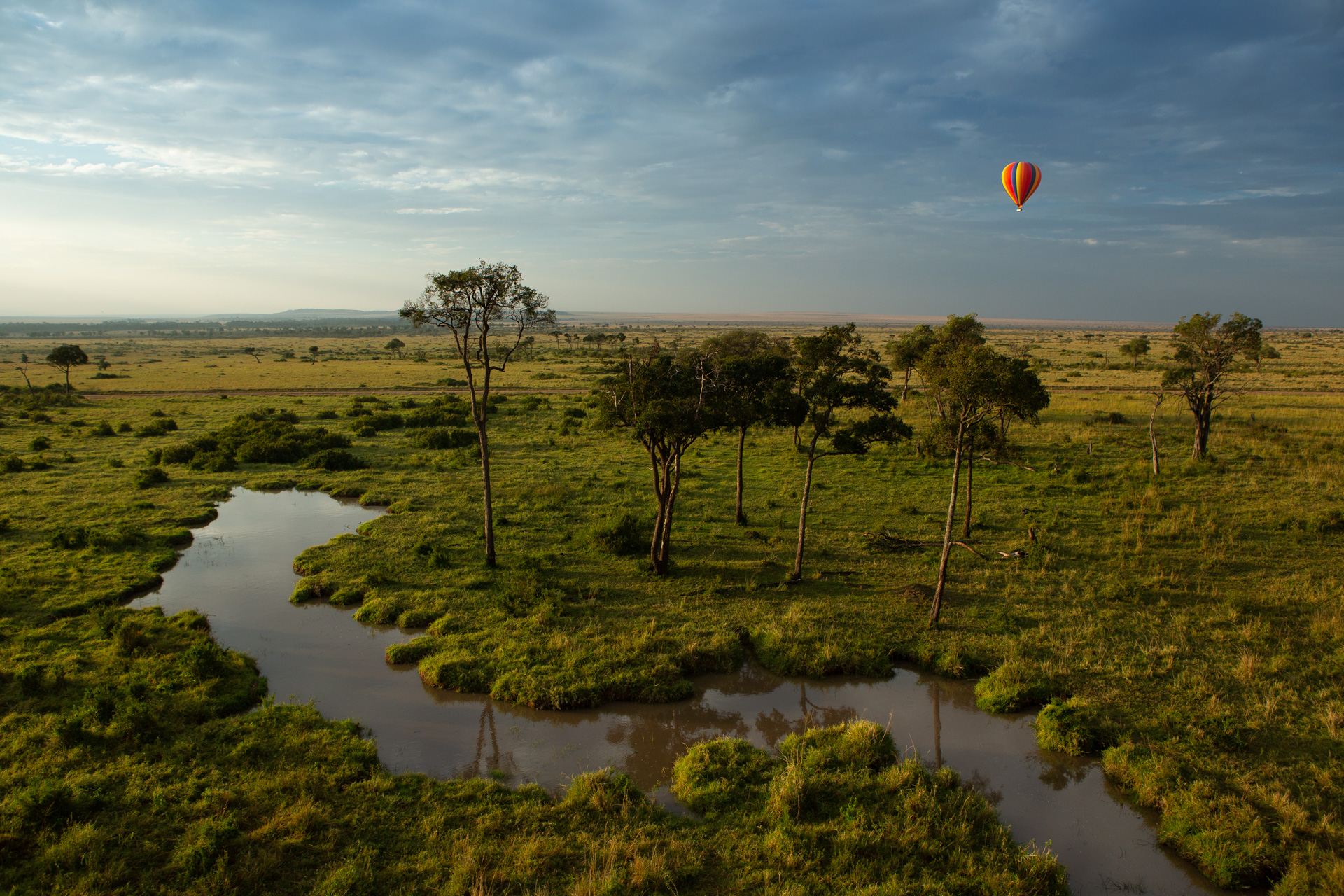
The lighting was phenomenal. The rich colours of the balloon contrast so nicely with the green of the grass and the blue of the dramatic sky. [f 5.6, 1/250, ISO 400]
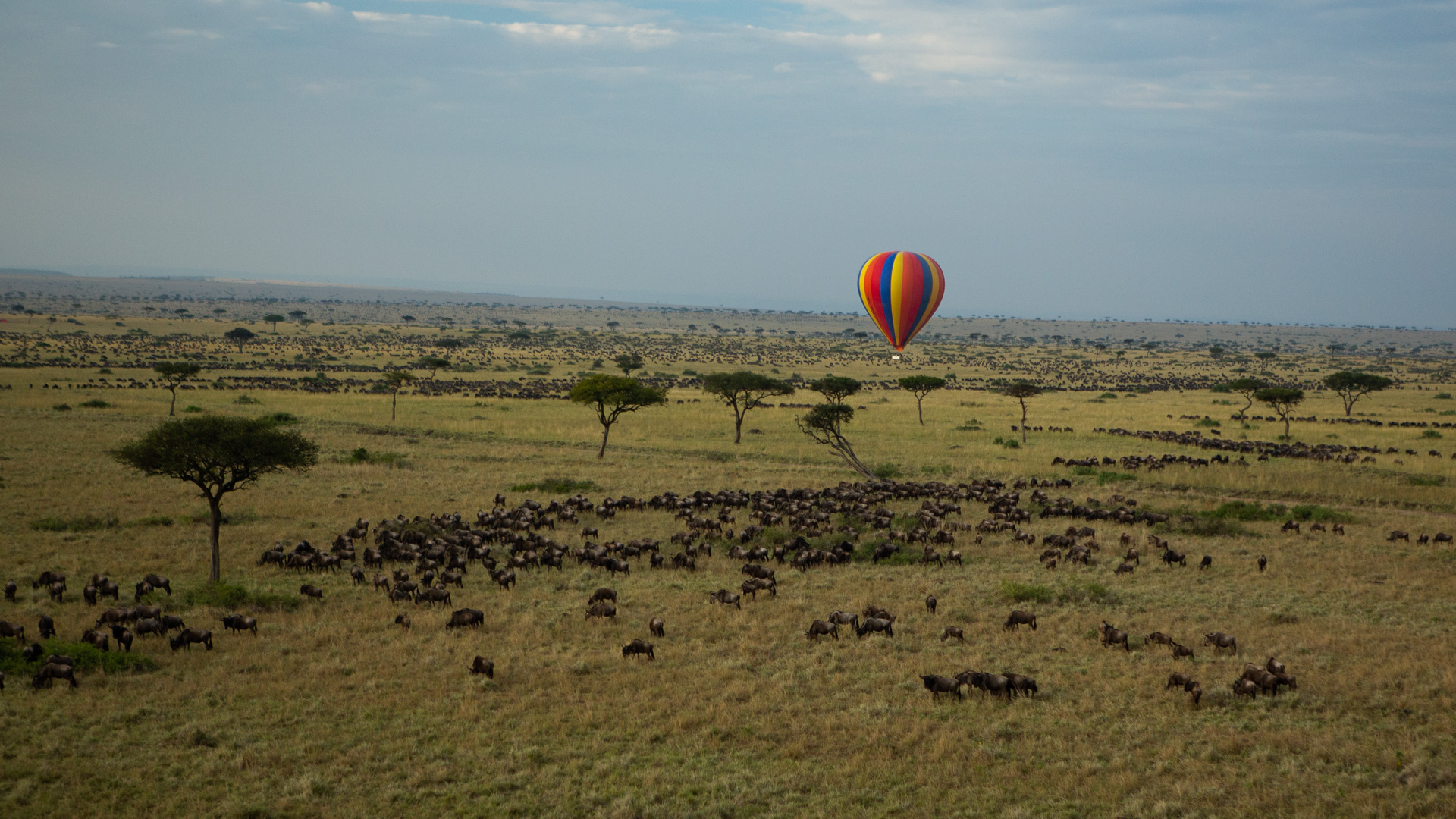
And, of course, who could wish for more than to float above the migration. [f 3.2, 1/800, ISO 500, -0.33]

The return of the migration has jump-started a wave of energy into the grasslands. If you are willing to wait for it, there is always action to be found. On this occasion, we waited for over an hour as a lone lioness crept ever so slowly towards a moving herd of wildebeest. Unfortunately, when she decided to make a charge, she erroneously selected the biggest male in the herd, who subsequently stood up to her. [f 6.3, 1/3200, ISO 1000]

I had been getting a little sad over the last two weeks that the days of great vulture action was coming to an end. Imagine my delight when the migration returned, and with it the vultures. Here a white-backed vulture comes into land. [f 5.6, 1/1600, ISO 400, +0.33]

Two more white-backed vultures in the first light, waiting for the day to heat up, the thermals to form for them to be able to take to the skies in search of death.[f 5.0, 1/250, ISO 640, -0.33]
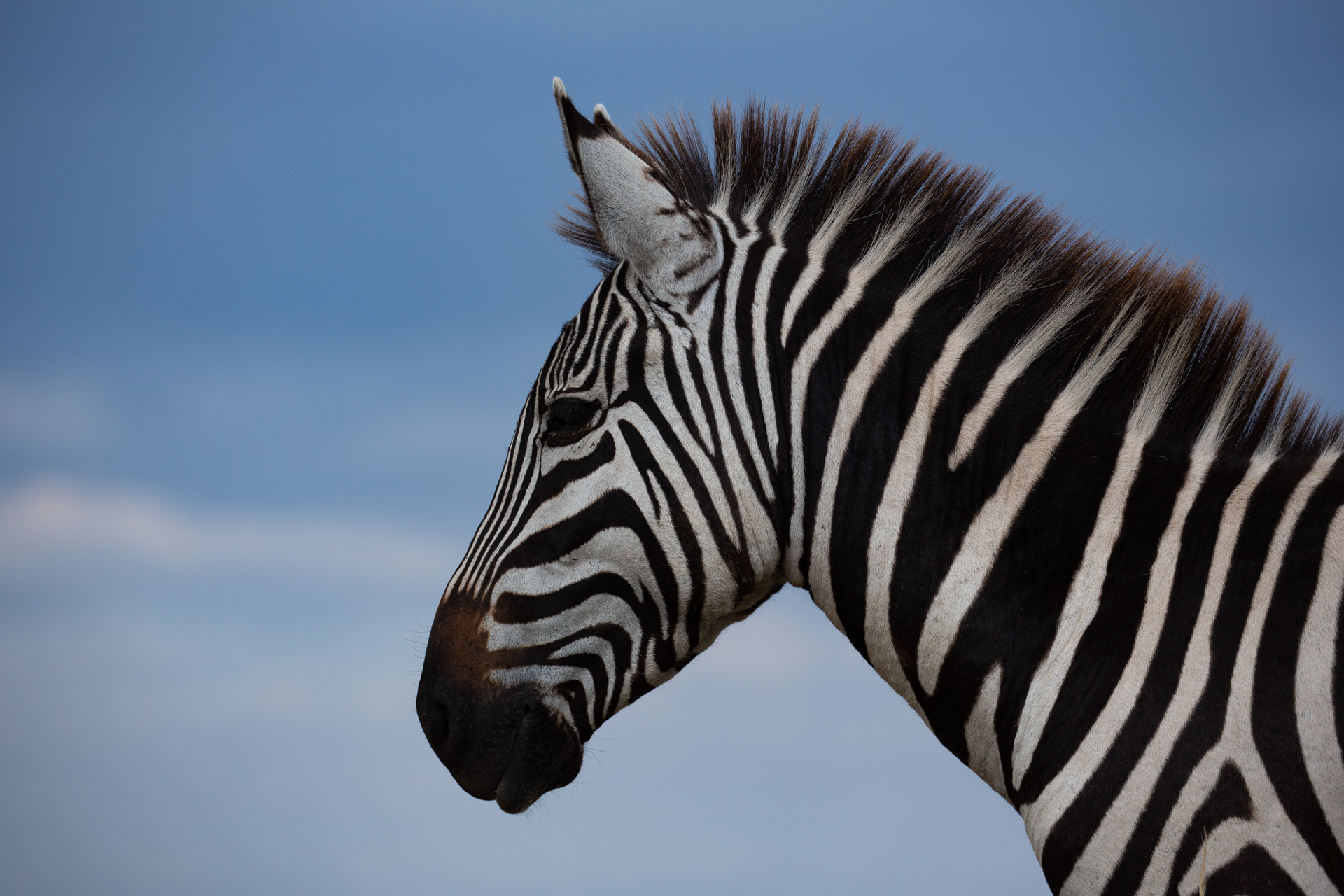
There has been much talk over the last few weeks of the young melanistic ‘black’ zebra in the Mara. I have yet to see this little celebrity. Until then, I will have to be content with the traditional black-and-white version. [f 5.6, 1/1600, ISO 250, -0.67]
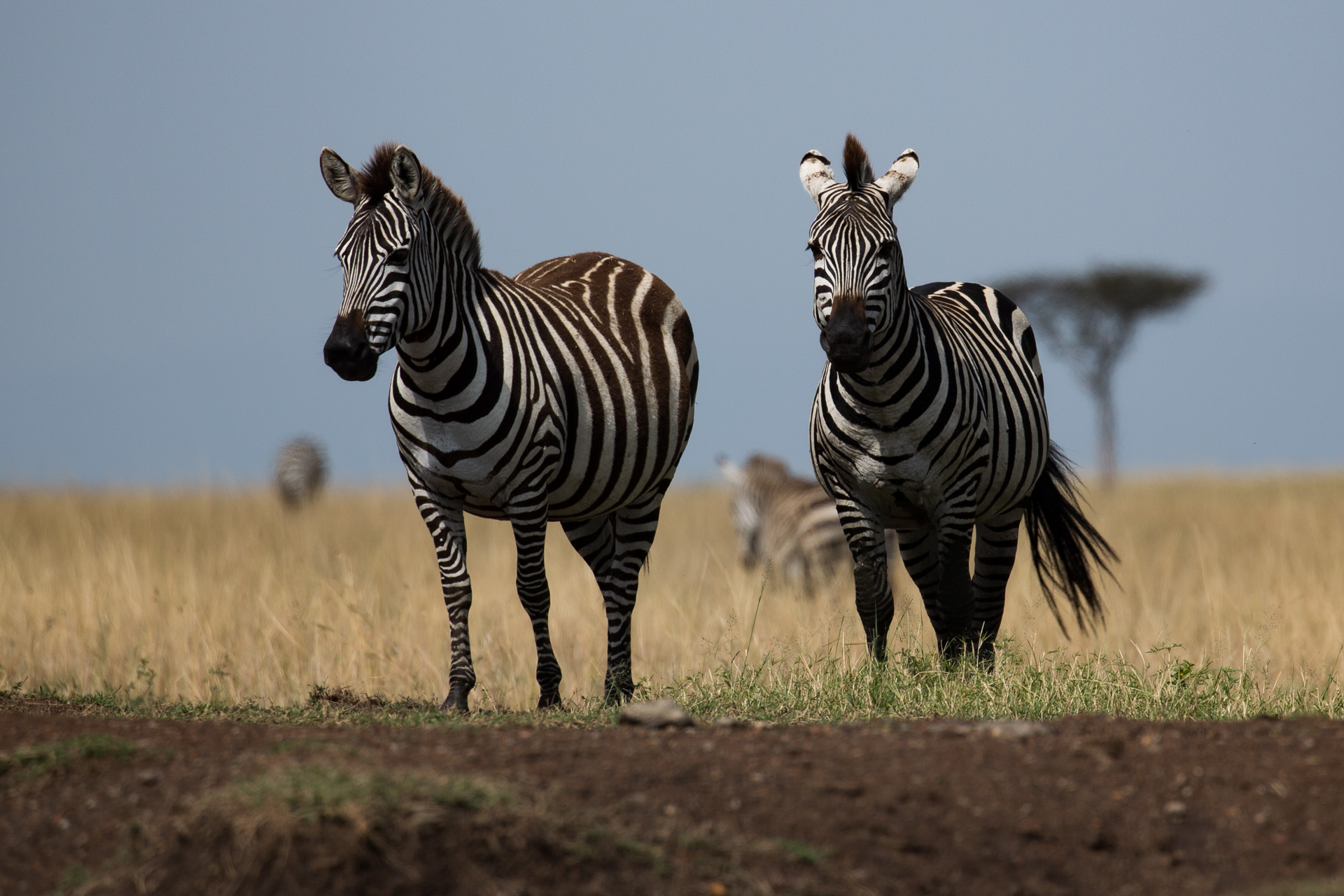
This is a particularly meaningful shot for me. The reason? Last week, I waited for ages to get a shot of a zebra and this specific tree. I waited for half an hour for everything to line up perfectly. This week, I was simply driving past this same tree and zebras were just waiting at the same tree, as if asking me to take their photograph. [f 5.6, 1/800, ISO 100]
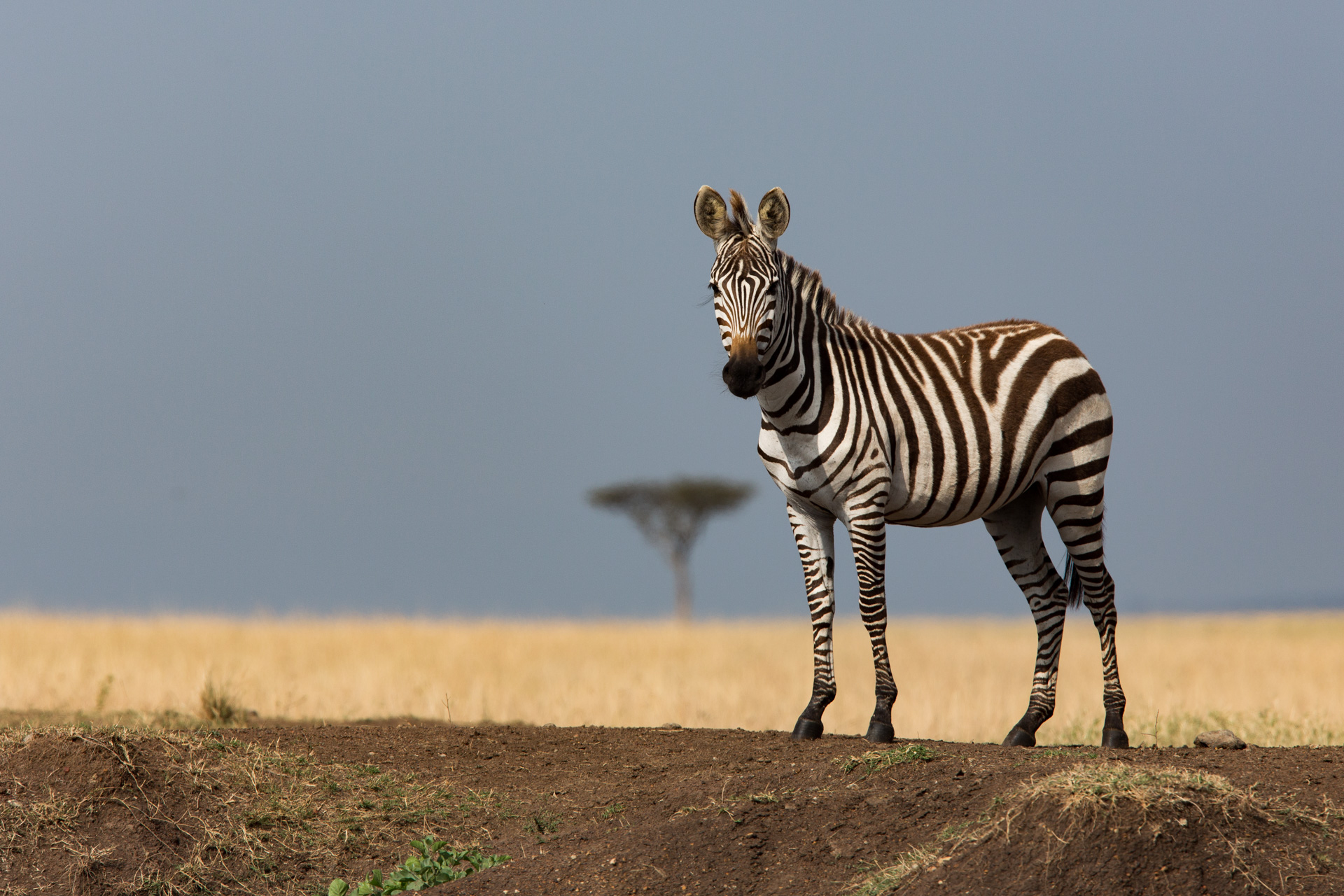
This is the image I captured last week. [f 7.1, 1/1250, ISO 250]

I am often amazed at how resilient animals are. Look closely at this wound; I imagine it was caused by the teeth of a crocodile during a river crossing. [f 5.6, 1/1250, ISO 200, +0.33]
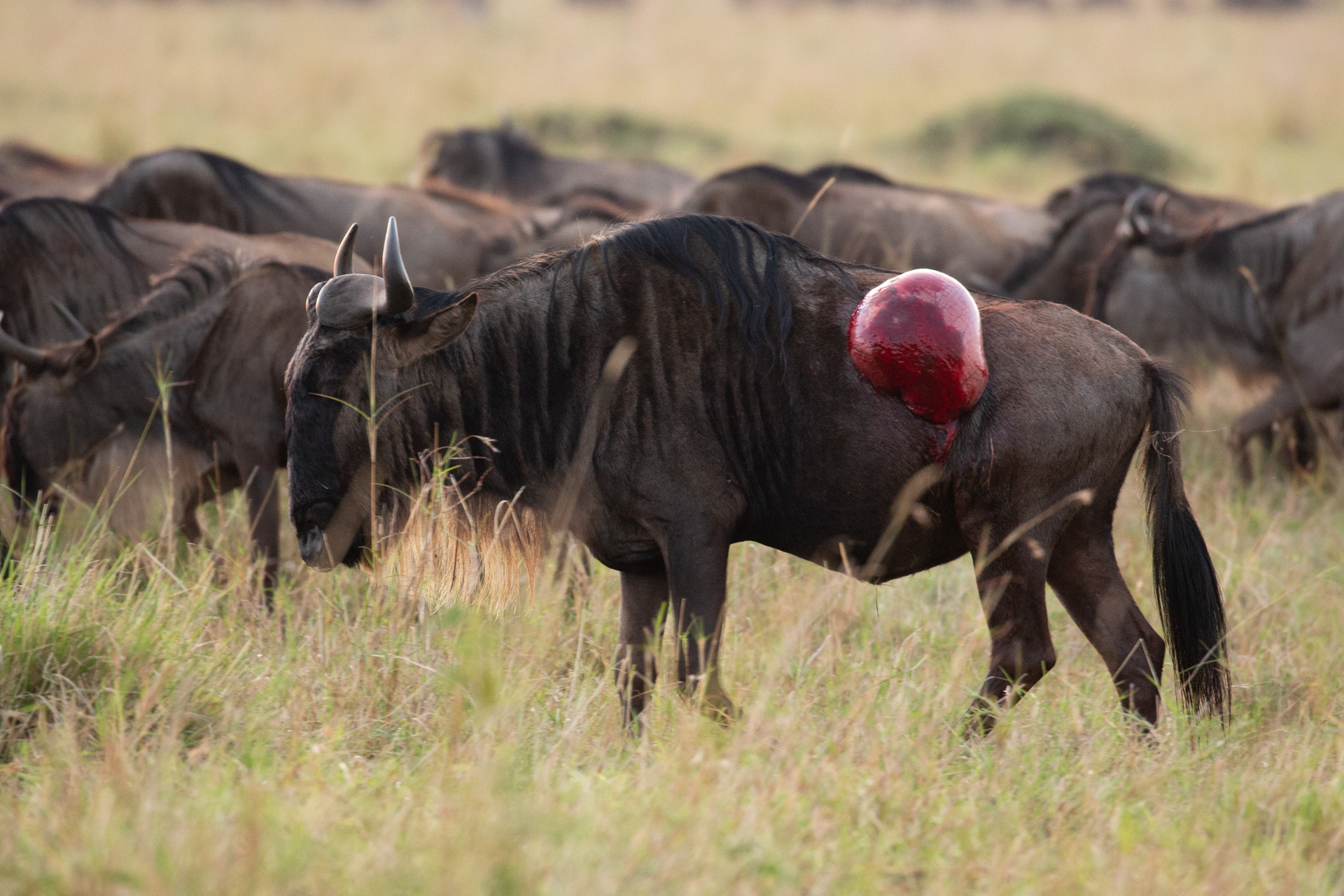
Not for the faint-hearted. How on earth this wildebeest is still alive I have no clue. Incredibly, it was keeping up with the rest of the herd. Surely, its days are numbered? [f 5.6, 1/125, ISO 2000, -0.67]
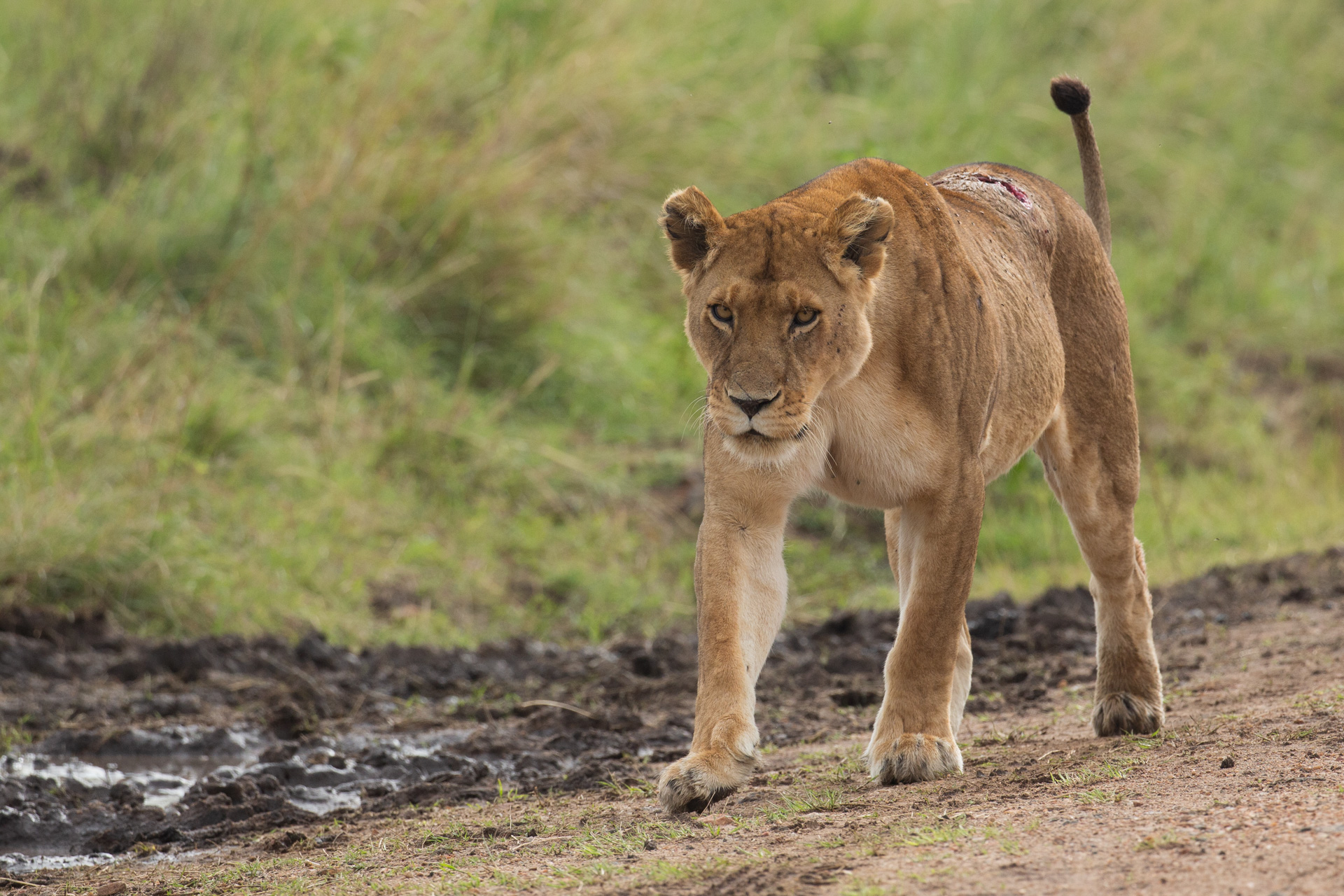
Two to three weeks ago this lioness was brutally gored by a buffalo in a failed hunt. The Mara veterinarian was called in and he did some work on her back, mainly to clean and disinfect the deep wound. Although her injury still looks terrible, she is able to walk and seems to be alright. The return of the wildebeest could not have come at a better time for her, as hunting will be a little easier for her now. [f 6.3, 1/1250, ISO 640, +0.33]
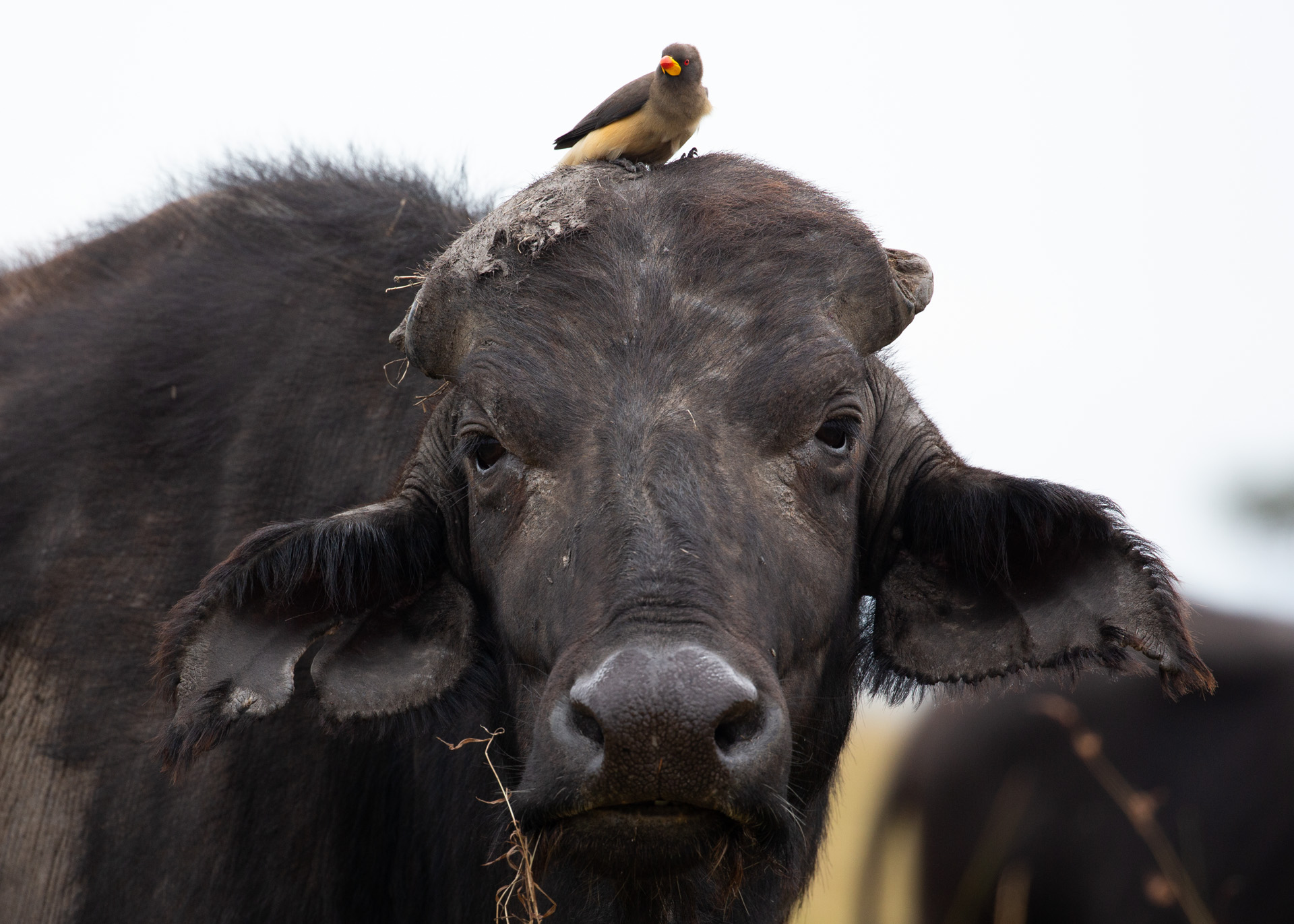
A rather sad and odd looking buffalo without any horns. A yellow-billed oxpecker rests on top like a crown. [f 6.3, 1/1000, ISO 500]

The road from Angama Mara down to the Triangle often produces lovely photographs. The main reason is the backdrop of the reserve. [f 5.6, 1/1600, ISO 250, -0.67]

We came across a lioness moving calmly from termite mound to termite mound. She seemed to be minding her own business. A passing journey of giraffe saw her and moved in closer for an inspection. This group grew in confidence and eventually we had them just metres from the now frustrated lioness. Any hopes of hunting had been dashed. [f 5.6, 1/500, ISO 500, +0.67]

Possibly the image of the week for me, the reason being that it includes four icons of the Mara in one frame: 1) Giraffe, 2) lion 3) hot air balloon and 4) the lone balanites tree. [f 5.0, 1/2000, ISO 500, +0.67]
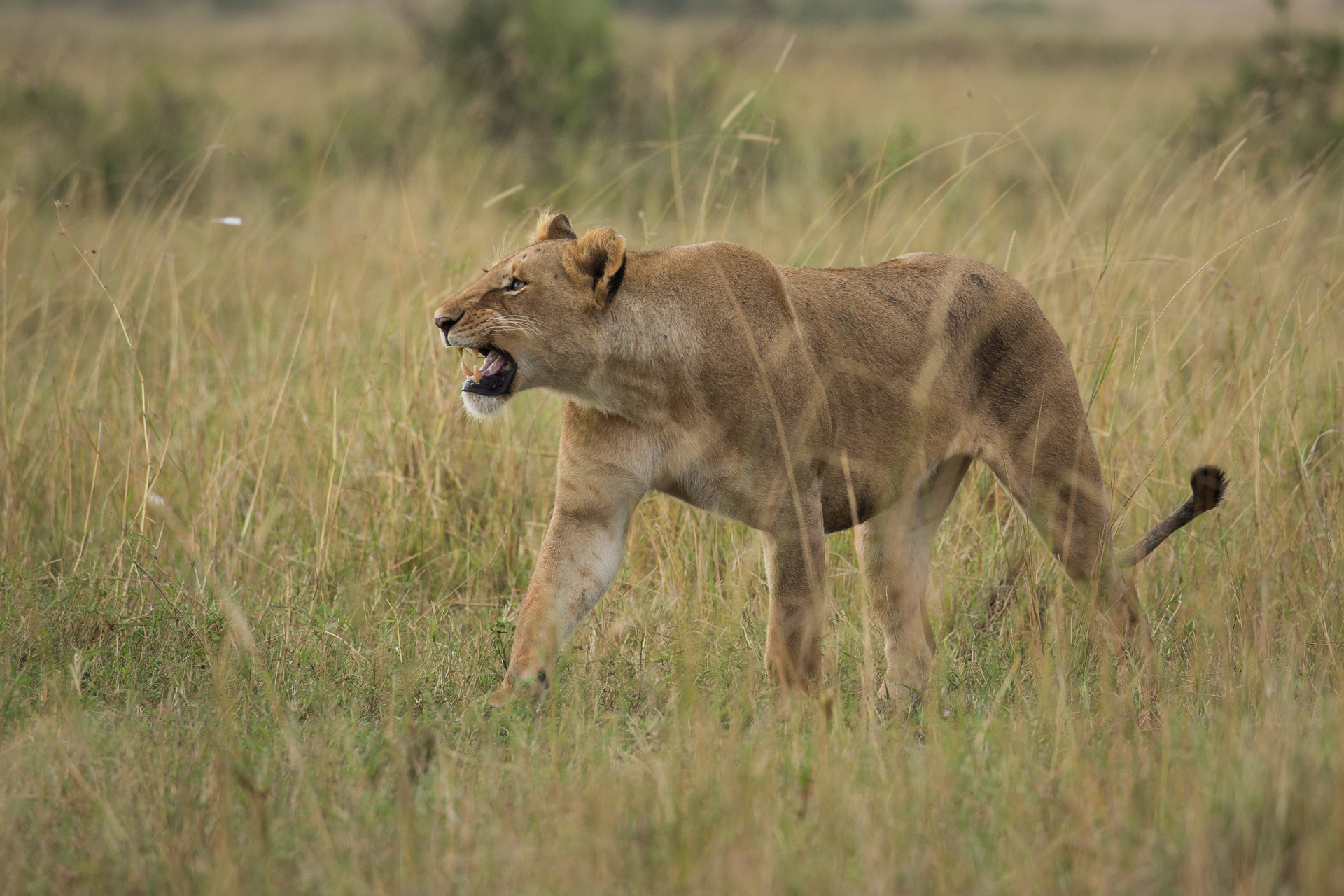
I followed this lioness for well over two hours one morning. She was being harassed by various other animals. Here, I managed to catch her mid-snarl. A group of vultures were sitting in a tree above her and she seemed to be unhappy about their presence. [f 7.1, 1/320, ISO 500, +0.33]
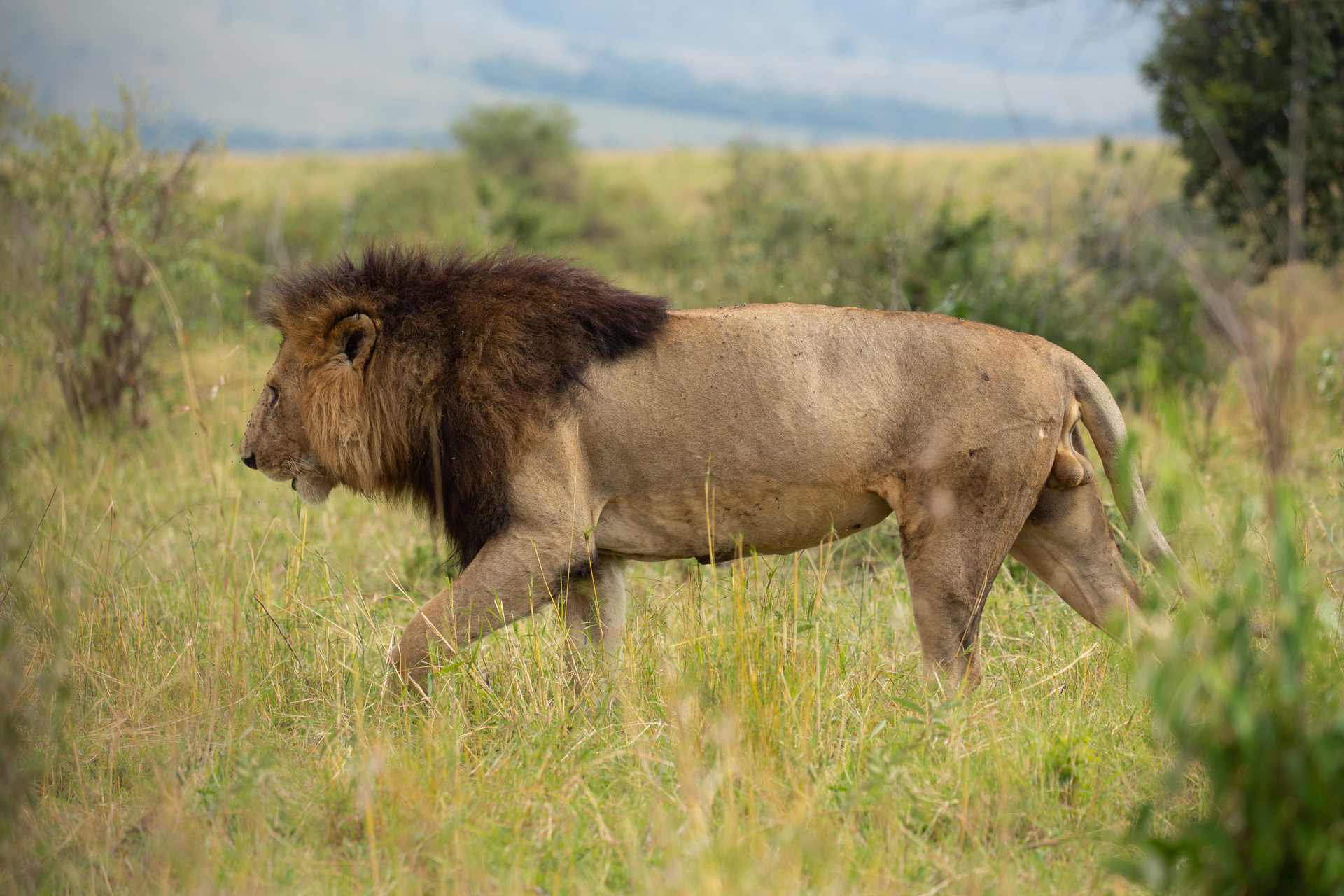
The short-tail Kichwa male. Lately, he has been featuring most weeks in this blog series. I believe his age to be 9 to 10 years and he and his coalition partner are truly dominant of the northern Triangle. [f 5.6, 1/800, ISO 320, -0.33]
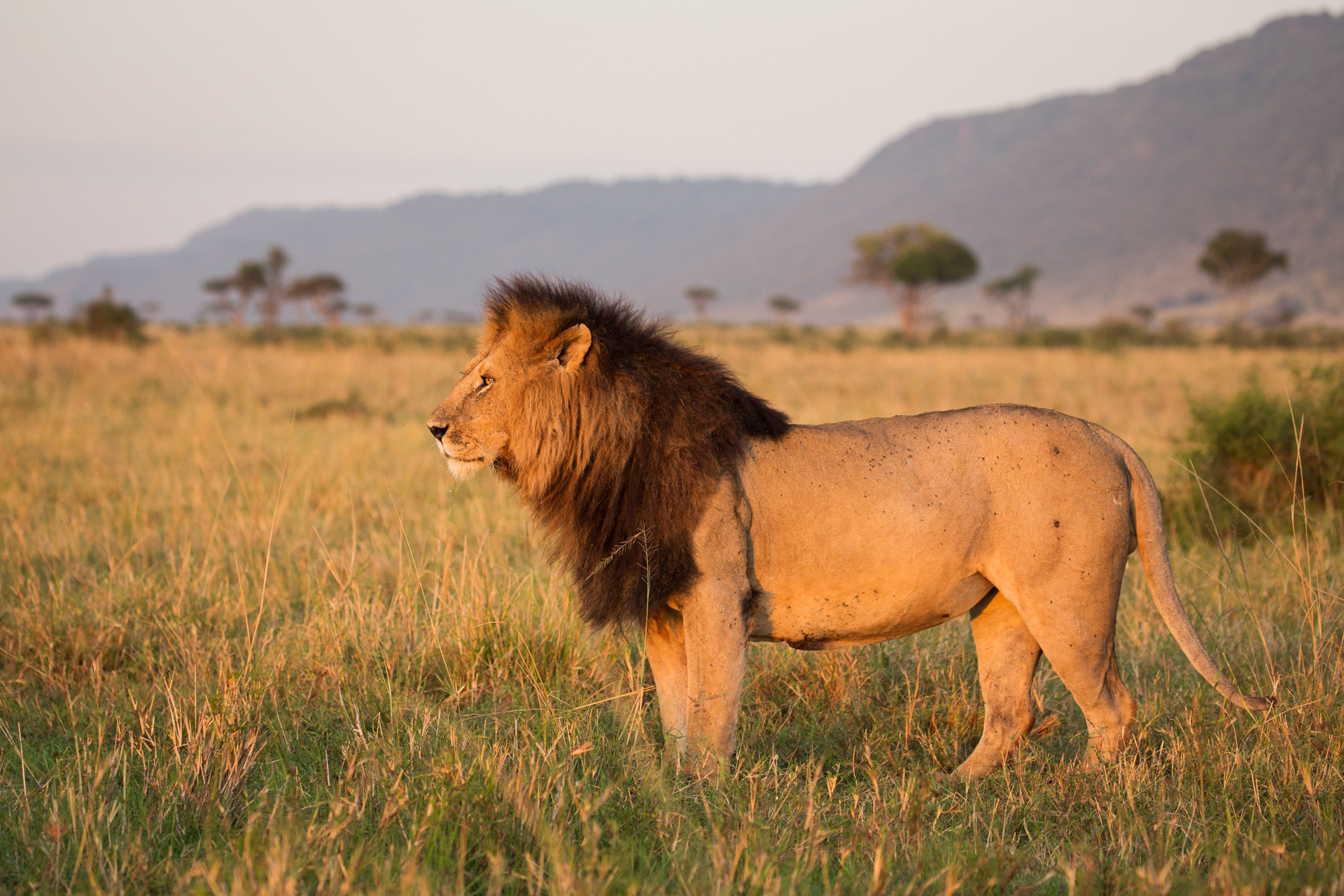
Same male, different day. What I love about this photograph is not just the lighting, or his regal stance and low angle, but the backdrop of the Oloololo Escarpment. This geographical feature is iconic of this male lion’s territory. [f 5.0, 1/400, ISO 800, -0.33]

His coalition partner Fang. His face is much more ragged and scarred. [f 5.0, 1/250, ISO 800, +0.33]
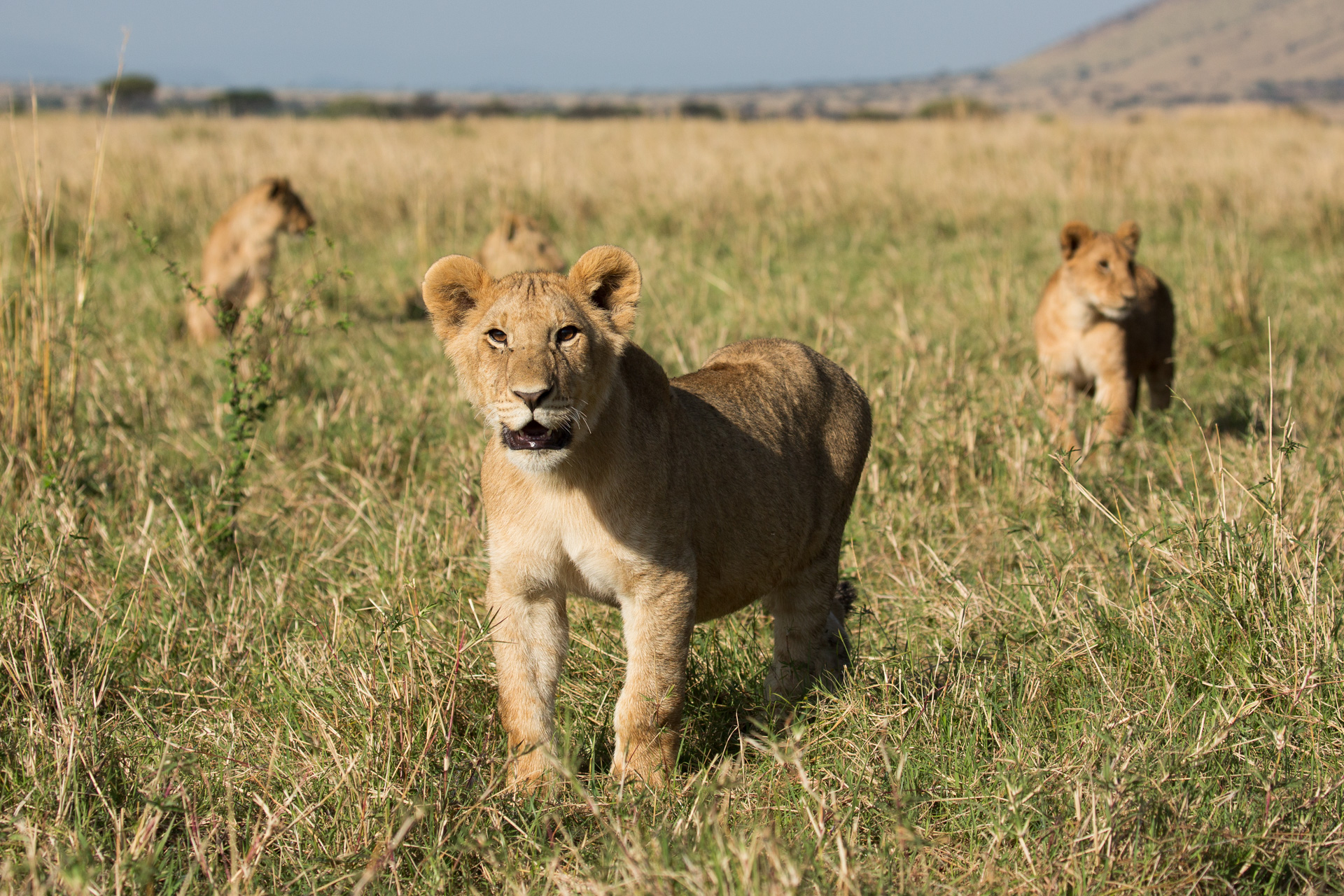
The Sausage Tree Pride cubs are growing very quickly. They are at that curious age which makes them so much fun to spend time with. [f 6.3, 1/2000, ISO 400]

Sweet and innocent. This baby elephant is still of the age where it is experimenting with the abilities of its trunk. [f 5.6, 1/500, ISO 100]
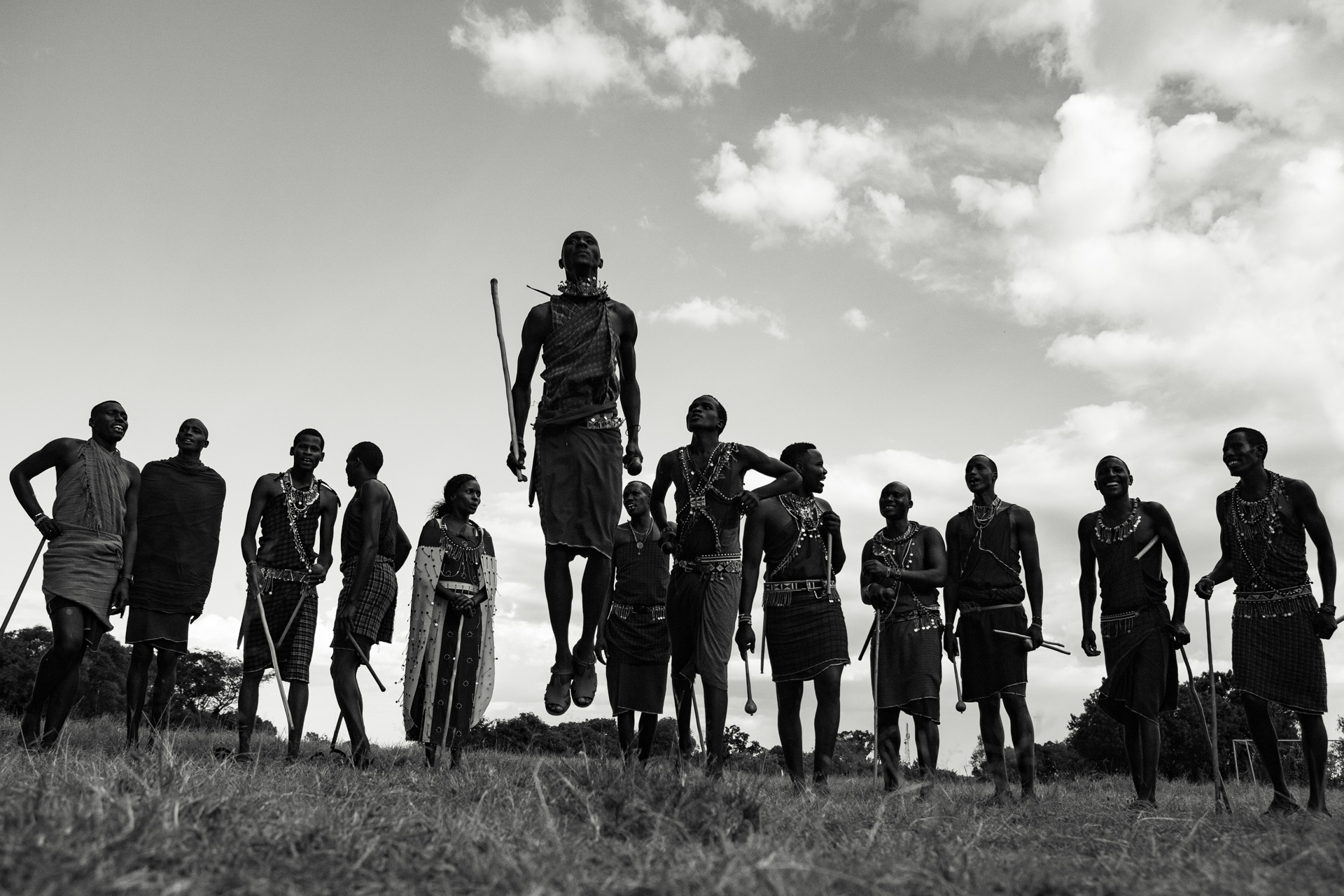
This week, we hosted a large group of guests. One of the activities we put on was a mini ‘Maasai Olympics’. We invited the guests to join the local Maasai warriors from the nearby community. Events included spear-throwing, rungu-throwing, relay-racing and even giraffe dung spitting – just for a laugh. When it came to high-jumping, we let the Maasai do it themselves, as there is simply no beating them in this event. [f 5.0, 1/1250, ISO 800, +0.33]
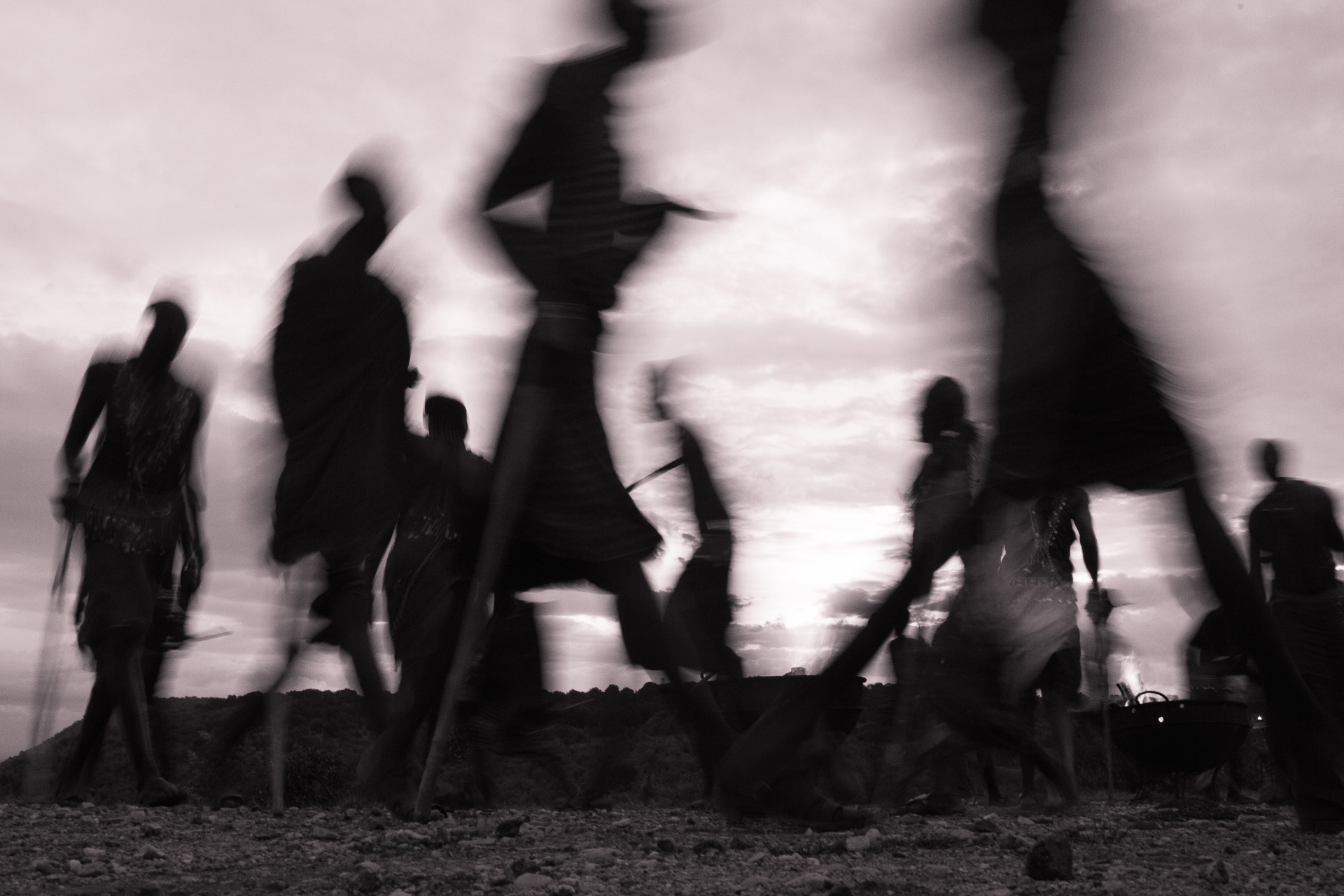
An abstract image of Maasai in full dance. [f 20.0, 1/6, ISO 800, -0.67]
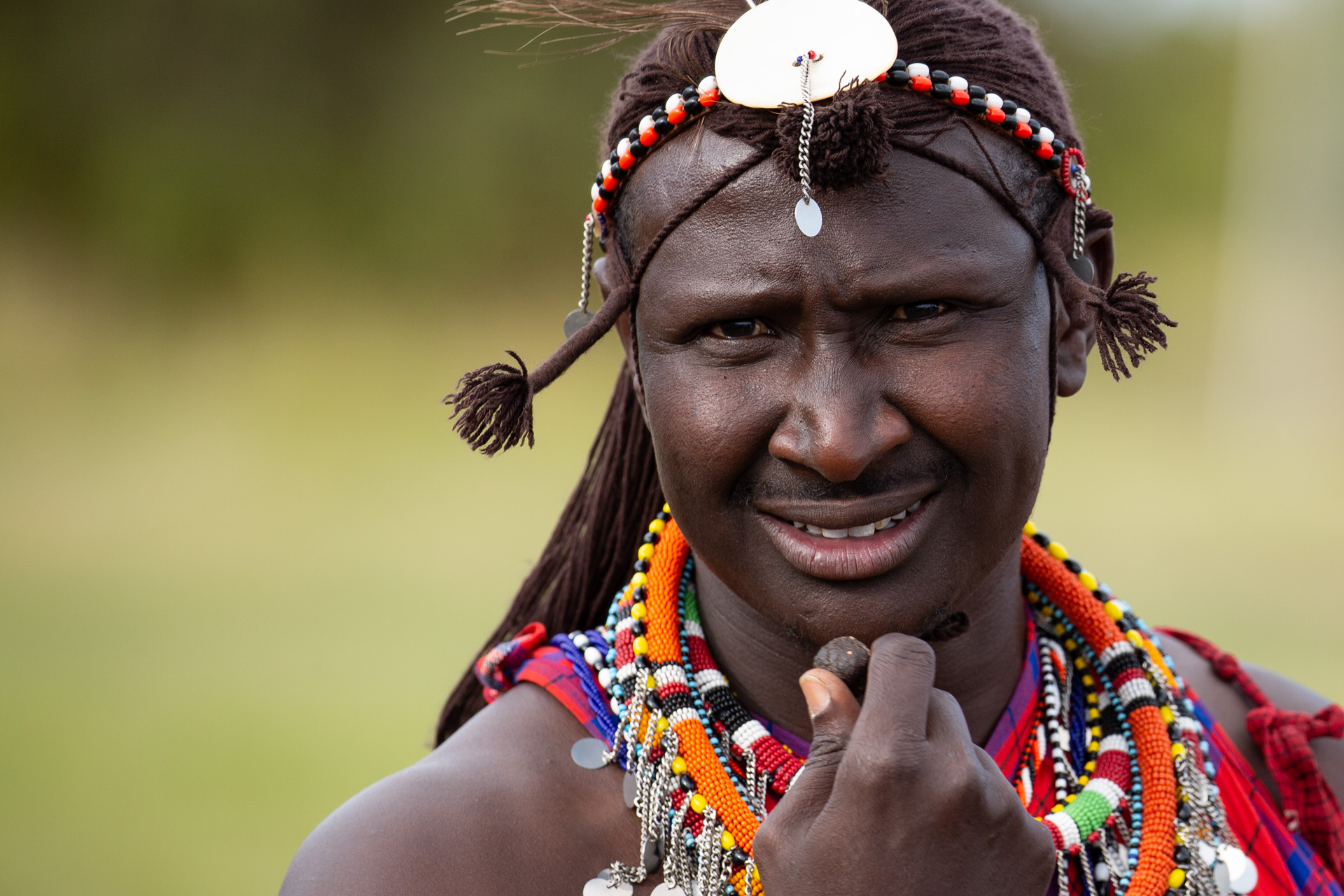
Incredibly photogenic and colourful. [f 5.6, 1/250, ISO 250]
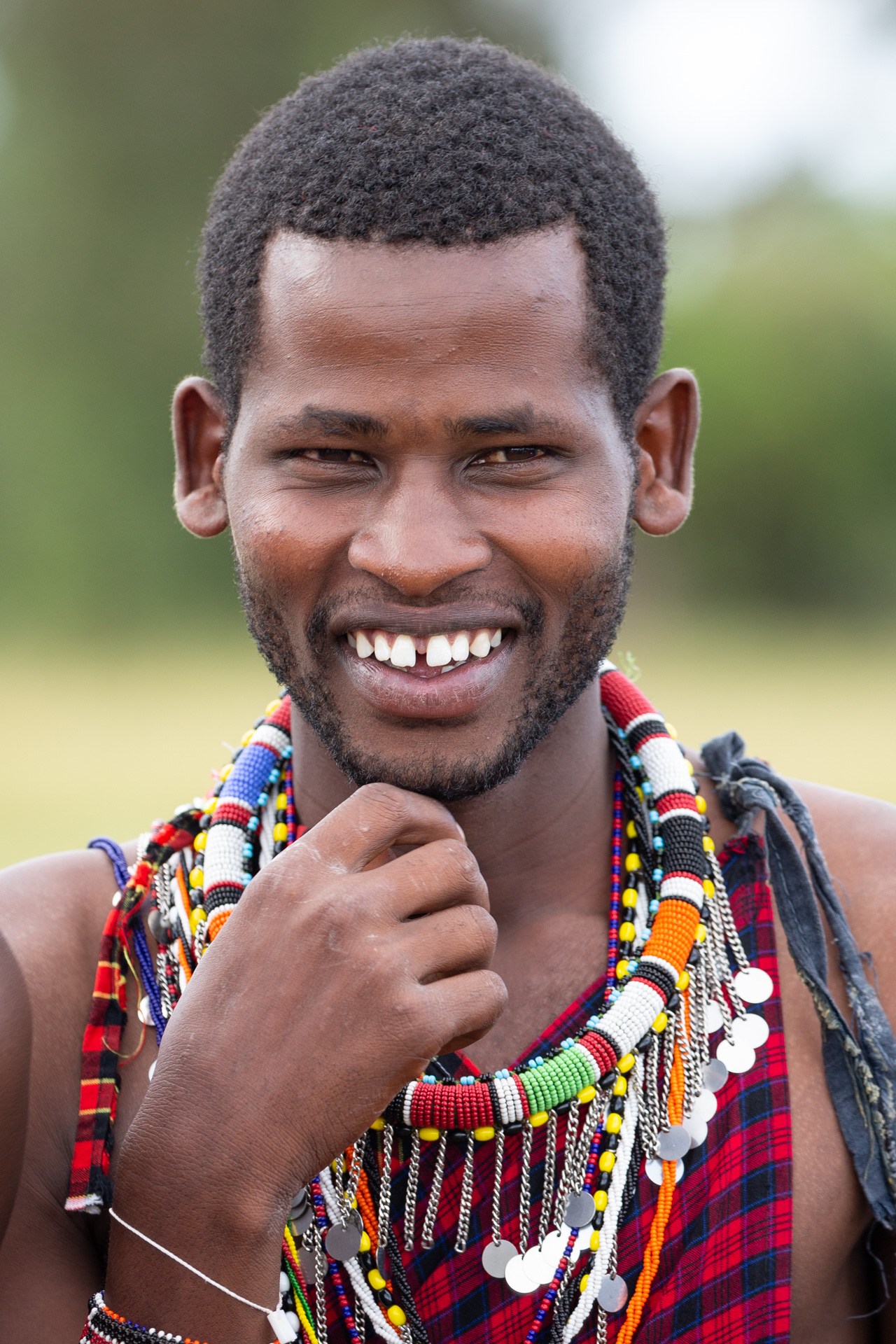
Glorious energy and kindness. [f 5.6, 1/125, ISO 250, +0.33]
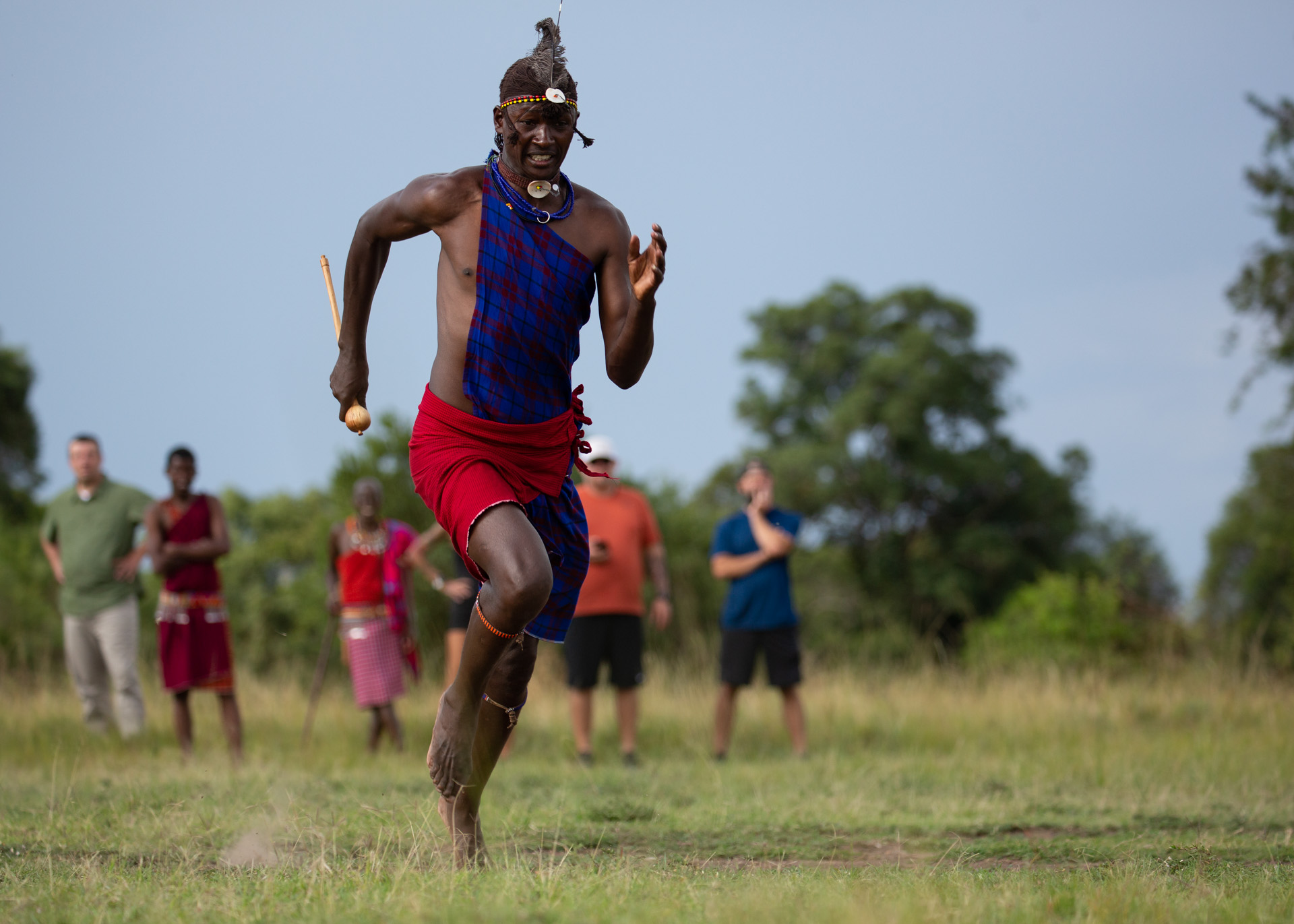
The 4×100-metre relay was a great event and a fantastic opportunity to get some action shots. [f 5.0, 1/1600, ISO 400]
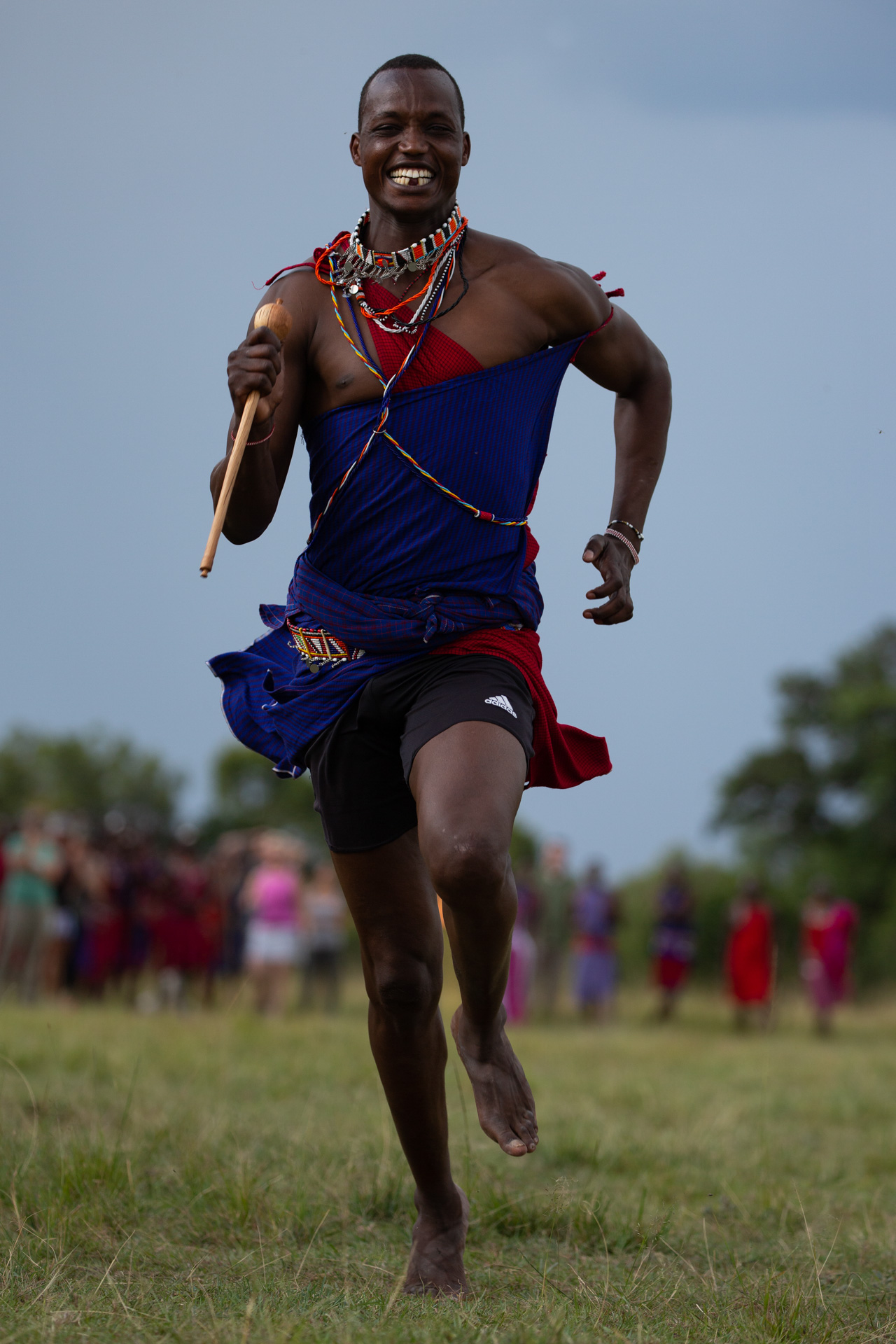
Simply put, the Maasai were born to run! [f 5.0, 1/2000, ISO 400, -0.33]
This Week a Year Ago

The highlight of this week for me was the scene of the lioness backed by a handful of giraffe. Incredibly, a year ago, the highlight of my week was this photograph; a chaotic scene also involving a lion and giraffe. What a marvellous coincidence. [f 6.3, 1/2500, ISO 500]
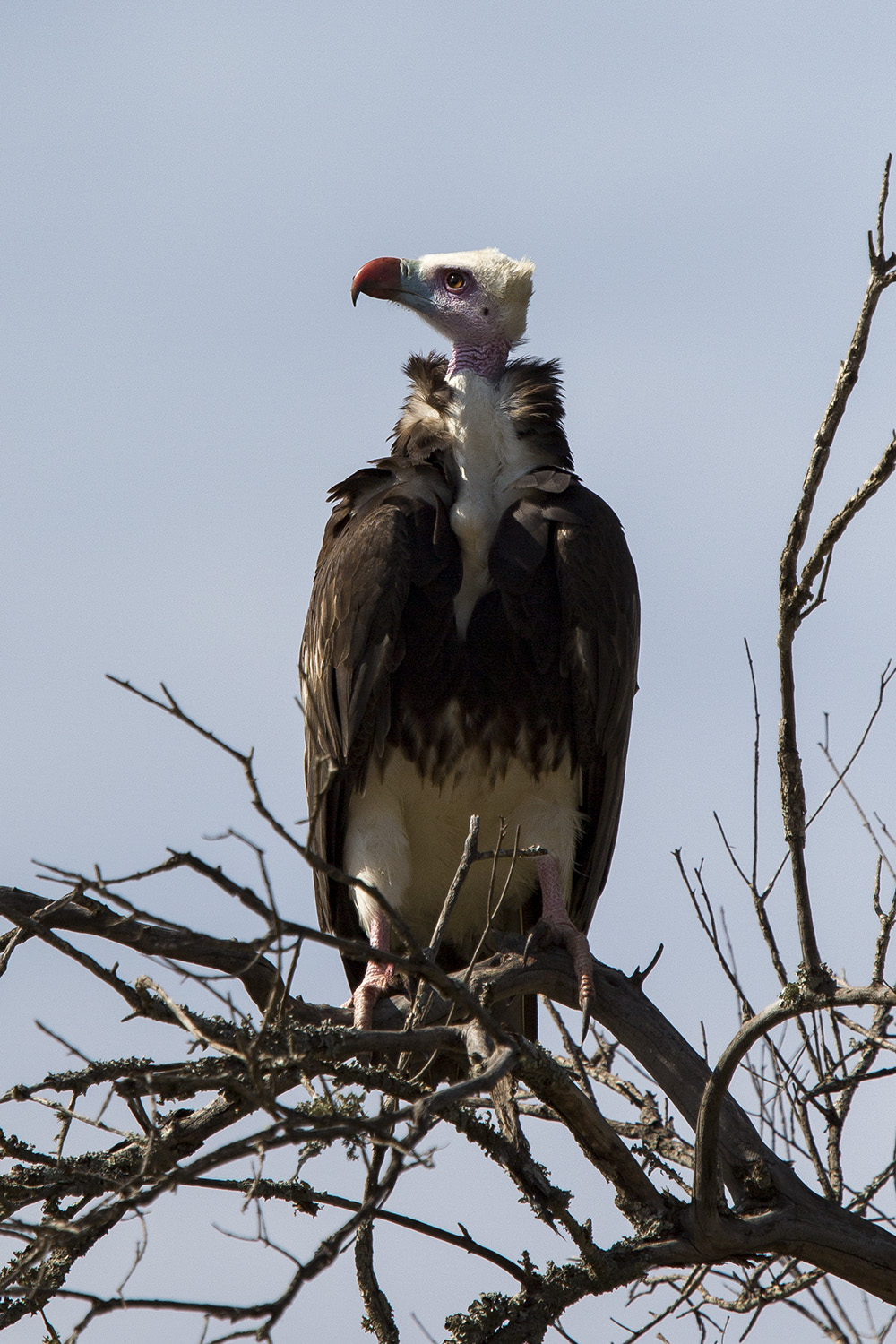
One of the main purposes of wildlife photography, and in fact of this blog series, is to educate and spread awareness about the Mara ecosystem. This picture taken 365 days ago, of a white-headed vulture, was devastatingly the last photograph I have taken of this vulture species. Can you believe I have not had another sighting in a year? Estimates are that there are fewer than five pairs of these critically endangered birds. In the last 10 years we have watched them move from ‘near-threatened’ to ‘critically endangered’. The reason? Habitat loss and poisoning of carcasses. While the media highlights the plight of elephant, rhino and lion; species of vulture are often overlooked. I cannot stress the importance of the role they play in the ecosystem. [f 4.5, 1/3200, ISO 250, +0.33]
TAGGED WITH: Wildlife, Angama Mara, Migration, Hot Air Balloon, Wildlife Photography, the great migration, This Week At Angama, mornings in the mara, hot air balloon safari


